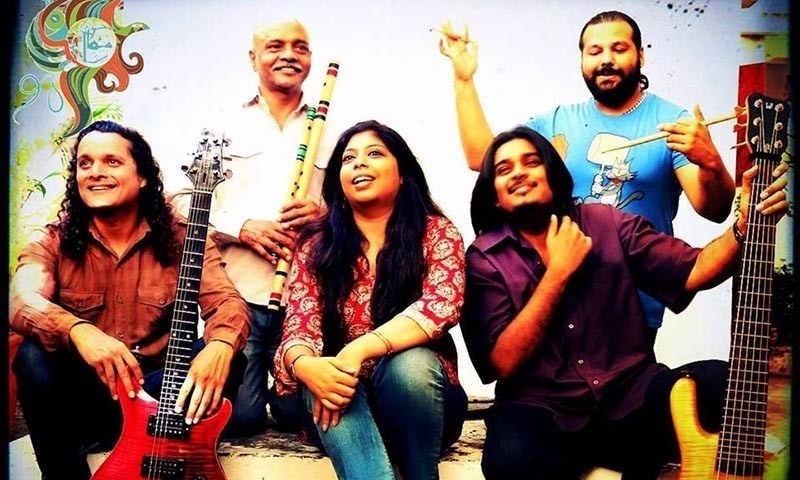A captivating mix of sounds

It always amazes me how little most people in North America know about Pakistan. I wonder how many people could tell you of the country's origins let alone anything about its thriving and diverse cultural heritage. However, there are those in Pakistan not willing to accept the ignorance of the rest of the world, nor be oppressed by those elements within the country who want to eliminate the vibrant mosaic of expression as represented by their musical diversity.
FACE (the Foundation for Arts, Culture and Education) work tirelessly to promote Pakistani culture at home and abroad. As its name suggests, FACE does more than just stage cultural events. According to its mission statement, it works towards promoting access to quality education and to equip young people with the artistic skills and social conscience needed to become active participants in the development of society. It places particular emphasis on helping financially disadvantaged students gain access to higher education, including, but not limited to, art and vocational education.
In a nation where being a musician is a potentially dangerous profession, FACE's work on promoting music and other cultural areas is equally important. While its programme is primarily focused on the development of talent and helping local artists keep pace with developments in music technology, it also works to promote the music of Pakistan to an international audience.
Promoting the music of Pakistan abroad
Through co-partners in the US and Europe, FACE organises and promotes the many faces of Pakistani music abroad. Not only does this breed awareness of the variety of music and performers working out of the country, it also provides the musicians with access to international markets that don't normally have the opportunity to see or hear their music.
Pakistani musicians face challenges unlike other musicians in accessing the rest of the world: the ban on YouTube and the censoring of social media sites in the country deprive them of a means of exchanging ideas and content most of us take for granted.
So the showcase of Pakistani music organised by FACE at the prestigious South By Southwest Festival in Austin, Texas in March 2015 and the accompanying compilation of music released to the media takes on an extra significance. Not only did it introduce a brand new audience to the diversity of music available in Pakistan, it also gave individual artists and groups exposure to people who wouldn't normally have a chance to listen to them.
Not what many would expect to hear
The music included on the compilation is only a small sample of the vast array of talent and traditions available in Pakistan's four provinces: Sindh, Punjab, Balochistan and Khyber Pakhtunkhwa. Each province has its own distinct language and its own musical tradition and cultural heritage. Groups like Poor Rich Boy, with smooth melodies and socially conscious lyrics, and solo artist Haroon sing in English and don't sound very different to the same types of performers the world over. While the fact that they sound like they could come from anywhere will probably surprise some people (it shouldn't – as an Indian author friend told me, South-East Asia has the largest English-language audience in the world), the other bands included will be equally surprising in their own ways.
Hailing from Peshawar in the country's northern province of Khyber Pakhtunkhwa, a city sadly made notorious by the school massacre of 2014, Khumariyaan are a traditional music ensemble. They play a type of fast and furious folk music that will leave you breathless. While the first of their tracks, "Sheenai" is of rather inferior quality as it is taken from a live performance, it gives some indication of the rapport they have with an audience."Bela", recorded in a studio, is much clearer and uses modern recording effects and instruments to compliment their sound. Haunting and beautiful, it is an example of how FACE is working to bring the sounds of country's regions together.
From the traditional to the modern
The Mai Dhai Band features a mix of traditional and western music. The band takes its name from their lead singer, Mai Dhai, a singer of traditional Manganiyar songs from the South East of Pakistan. Her gritty voice sounds likes it come down the centuries from ancient days, but she's accompanied by a combination of modern and traditional instruments making for a captivating mix of sounds. "La Gorey" stands out in particular as with its gentle swing and intricate guitar it has a definite jazz swing. A beautiful mix of old and new.
The Mekaal Hasan Band may come as the biggest surprise to most listeners. Who would expect to hear what is basically a progressive rock band, with a bit of jazz influence, hailing from Pakistan? However, what is most surprising are the lyrics, as they are taken from Sufi poetry. Making this Lahore-based band even more unusual is their line-up, which includes members from both India and Pakistan, making them unique in South-East Asia. Their mixture of traditional flute, soaring vocals and hard rock guitar, drums and bass might take some getting used to, but there can be no denying their talent and innovation.
In a country where being a musician in certain regions can literally be life threatening, an organisation like FACE, which promotes and develops the music and cultural traditions, is the perfect counterbalance. Unfortunately it doesn't get the headlines, whereas every attack on the arts in Pakistan seems to make its way into our press. Sure it organises high-profile promotions like the SXSW showcase, but just as important is the fact that it is actively working at home to encourage the arts and education. Now that's something to celebrate.
Richard Marcus
© Qantara.de 2015